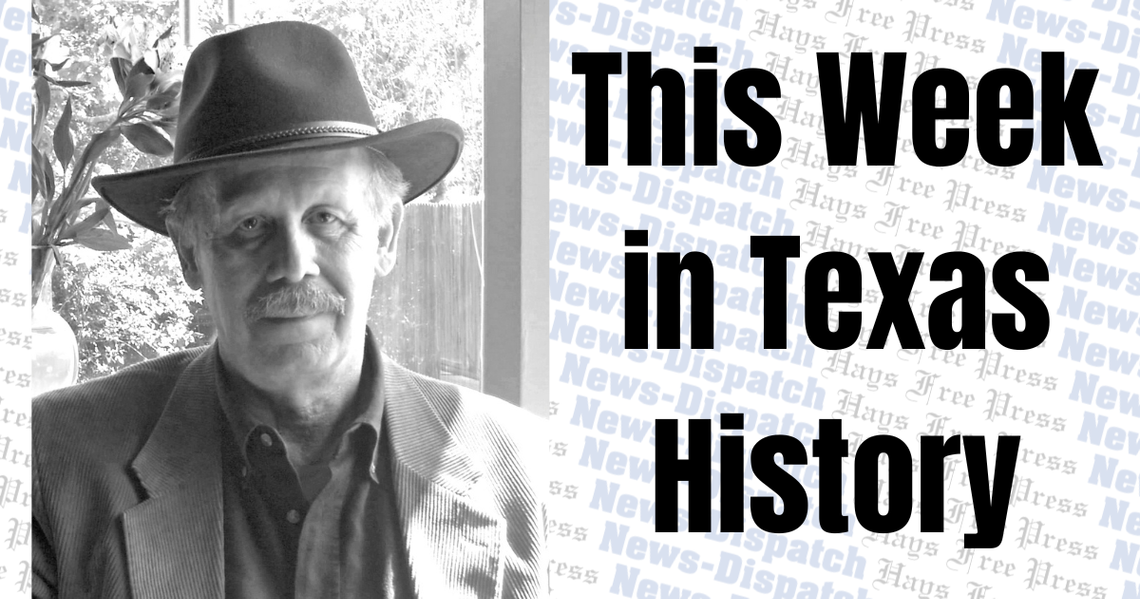The unprecedented manhunt entered its fifth week on Aug. 19, 1934 with two of the six escapees from Texas’ Death Row still on the loose.
Sentenced to two and a half centuries for his many crimes, Raymond Hamilton, an on-again off-again member of the Barrow Gang, entered the Texas Department of Corrections in 1933. He was quickly befriended by Joe Palmer, a career criminal doing a measly 25 years for armed robbery.
On the morning march to the fields in January 1934, Hamilton and Palmer retrieved the pistols left for them in a pile of brush by the Barrow Gang. In the blazing gunbattle that preceded their getaway an overseer named Major Crowson was mortally wounded.
Authorities apprehended Palmer a short time later, but Hamilton rejoined his notorious companions for an interstate crime spree. After a bitter quarrel with Clyde Barrow over his share from an Indiana heist, he returned alone to Texas.
Hamilton did not last very long as a solo act. Cornered by the cops within hours of a Lewisville holdup in April 1934, he meekly surrendered.
Fearing the hot seat, Hamilton blamed his former friends for the murder of an Oklahoma peace officer. The accusation brought an angry response from Barrow, who branded him “a yellow rat.”
At his trial, Joe Palmer proudly confessed to plugging the prison guard. “No power on earth could have kept me from killing Crowson. I hated him and meant to kill him if it was the last thing I ever did.”
Under the law, Hamilton bore equal responsibility for the homicide. Along with his pen pal, he was sentenced to die in the electric chair.
Armed with handguns supplied by a bribed guard, the dangerous duo and four other convicted killers slipped out of Death Row on Jul. 22, 1934. Firing wildly at the guard towers, they sprinted across an open courtyard toward the final barrier. Three convicts never made it, but Hamilton, Palmer and Blackie Thompson scaled the high wall and roared off in a waiting car.
Palmer’s luck did not improve, and by early August he was back behind bars. Thompson perished in a shootout with Amarillo police in December, the same month Hamilton emerged briefly from hiding to rob a warehouse near Dallas before again dropping out of sight.
Texans scanned their daily newspapers for the latest word on the search for the fugitive dubbed “the swashbuckling bandit king.” For three months, he provided readers with thrills aplenty as he led lawmen on a five-state chase.
Teaching his brother Floyd the family trade, Ray robbed an East Texas bank in February 1935. Seeking refuge in their old West Dallas haunts, the Hamiltons stumbled into six detectives but succeeded in shooting their way out of the trap.
Fleeing south to Beaumont, the brothers replenished their private arsenal by helping themselves to a federal armory. Plans to lie low in the North Texas countryside were spoiled near McKinney, where they again disappeared following a ferocious gunfight.
The pair finally parted company at Ray’s insistence. Keenly aware that they could end up like Bonnie and Clyde, cut to pieces by a shoot-first posse, he wanted to spare Floyd such a grisly end.
Hamilton ducked into a Fort Worth rail yard on Apr. 5, 1935 for some much-needed shut-eye. He had just dozed off when a Dallas deputy sheriff stuck a six-gun in his ribs and barked, “Hoist ’em, Ray!”
To reduce the risk of a third escape by Hamilton and Palmer, their executions were set for May 5, 1935. Palmer accepted his fate with a shrug and a sneer, but his young accomplice kept grasping at straws right up until the appointed hour.
“This is as close to the electric chair as I’ll ever be,” Hamilton boasted over breakfast. But his brave front cracked upon learning that the governor had turned down his plea for executive clemency.
Late that afternoon, Hamilton’s lawyer told him that all legal options had been exhausted. As the sun set, he mumbled to a guard, “I’ve got mighty little hope left.”
Palmer was the first to go. He walked ramrod straight to his doom greeting prison officials and spectators with a cheery, “Good morning, gentlemen.”
Four minutes later, Hamilton entered the death chamber noticeably pale but smiling. He wished the priest at his side well on an upcoming trip to Ireland and took his seat.
Once the mask, straps and connections were in place, the guards backed away from “Old Sparky.” Concealed behind a white curtain, the executioner threw the switch.
The dynamo whined as the current coursed through Hamilton forcing his body to stiffen against the thick leather restraints. Two jolts later, the doctor pronounced him legally dead at the age of 21.
Like Bonnie and Clyde, Raymond Hamilton’s bank-robbing days were over.
More to read about Raymond Hamilton in“Texas Depression Era Desperadoes.”
Order your copy today by mailing a check for $24.00 to Bartee Haile, P.O. Box 130011, Spring, TX 77393.











